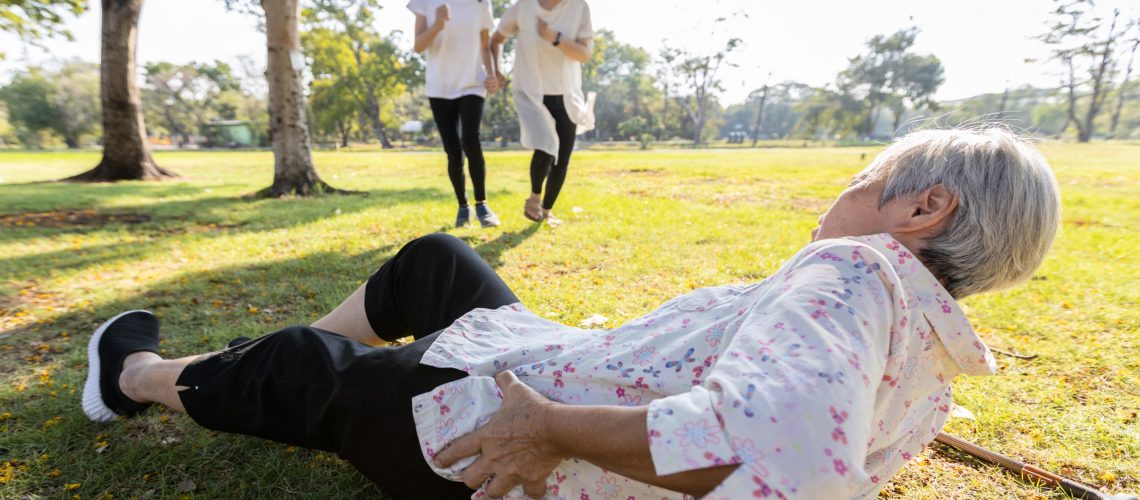Falls are the leading cause of injuries for seniors. The Centers for Disease Control found that 20% of falls by seniors result in a broken bone or head injury.
For some seniors, fear of falling is also a concern. This fear can make it difficult for people to move around their homes or perform basic tasks, and it can lead to a decrease in their quality of life.
Fall prevention strategies can reduce the risk of falls and prevent injuries. In this blog, we’ll talk about the two types of fall risks, how to mitigate them, and how assistive devices can restore freedom and reduce stress.
Preventing Different Types of Fall Risks
Before implementing fall prevention strategies, it helps to understand why falls happen in the first place. Every situation is unique, but the majority of falls can be categorized as being either the product of a senior’s environment or their health.
Environmental Risks
Environmental risks refer to a senior’s personal items and surroundings. This includes their home, neighborhood, clothing, and assistive devices like walkers or canes.

Given how much time is spent in the home, fall prevention strategies at home are essential. An easy way to decrease the risk of a fall is by improving lighting in the house. A poorly lit house makes trip-and-fall accidents more likely.
Installing grab bars and secure railings in bathrooms (particularly in showers and bathtubs) and along stairwells should also be part of a fall prevention plan.
Outside the home, check for uneven walkways and patios, and make sure the pathway from the front door to the driveway, mailbox, and sidewalk is clear. Make a plan for ice and leaf removal to avoid any accidents in the winter months, and make sure any stairs leading to and from the property have a railing.
It isn’t possible to minimize every hazard in the neighborhood, but ensuring seniors have proper, secure footwear and access to assistive devices like walkers can help avoid falls while out and about.
Health-Based Risks
Health-based risks refer to health problems and medications that increase the risk of falling. Poor balance, vision problems, and medication side effects are all examples of health-based risks.

Seniors who are experiencing poor balance often benefit from balance training. These programs are usually developed and administered by physical therapists and can help seniors minimize their chances of falling. Balance training is especially effective when combined with regular physical activity, which is essential to maintaining health, mobility, and flexibility.
Declining vision often leads to stumbles and falls, so regular eye exams should be part of any fall prevention plan. Checkups can help identify vision problems early and are also an opportunity to update and adjust prescriptions for glasses and other vision aids.
To prevent medication-related falls, make sure to talk to your senior about the medications they’re taking. Some medications can cause dizziness or have other negative side effects which can increase the chance of a fall, and seniors should be encouraged to discuss these symptoms with their doctor.
Sometimes seniors have a hard time remembering to take their medications. In these cases, it can be helpful to purchase them a medication reminder device. Click here to learn about our range of state-of-the-art medication reminders.
Protecting Your Seniors Wherever They Go
Preventing falls means avoiding months of discomfort and recovery, and it can even save lives. It’s impossible, though, to remove the risk of falling from your senior’s life entirely. An assistive device will make sure they get the help they need in the event of a fall.
HandsFree Health offers a complete range of protective devices to keep seniors safe. Between the WellBe Smart Speaker, Smartwatch, and Pendant, you can rest easy knowing that your seniors have access to the resources they need to stay safe and get help.

The WellBe Smartwatch and Pendant provide seniors with immediate access to medical help on-the-go, while the WellBe Smart Speaker allows for voice-activated calls for help within the home. Whether they are inside the house or on a walk at the nearby park, emergency services are always just one click away.
While other assistive devices require a hub connection in order to continue working, the WellBe line of products is mobile, meaning the devices still work if the wearer leaves home. WellBe devices work flawlessly whether the senior is in the community or miles away, ensuring that they always have the help they need.
If you want to learn more about our line of assistive devices, click here.
And if you would like to learn more about how to care for your aging parent, click here for our free guide, “Caring for an Aging Parent 101″.
